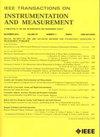A Multigraph Combination Screening Strategy Enabled Graph Convolutional Network for Alzheimer’s Disease Diagnosis
IF 5.9
2区 工程技术
Q1 ENGINEERING, ELECTRICAL & ELECTRONIC
IEEE Transactions on Instrumentation and Measurement
Pub Date : 2024-10-23
DOI:10.1109/TIM.2024.3485439
引用次数: 0
Abstract
Alzheimer’s disease (AD) is a degenerative disorder that encompasses multiple stages during its onset. There are certain shared characteristics among patients at various stages of AD, which results in the presence of incorrect edges in the graph structure constructed using graph convolutional network (GCN) for AD diagnosis. Due to the presence of incorrect edges, a singular graph structure faces challenges in accurately capturing the relationships between nodes. To tackle such a problem, this article proposes a screening strategy that constructs a large number of graphs, and selects an optimal graph combination. For each graph, the model adaptively aggregates lesion area features of similar nodes. Such a graph-selecting strategy alleviates the impact of incorrect edges and yields better performance. First, a multiscale composition module is designed to find the potential relationship between nodes, and the graph structure at different scales is constructed by extracting the significant pathogenic features from the node features. Second, a multihop node aggregation (MHNA) algorithm is proposed to find the correlation between multihop nodes in the same category, and highly correlated multihop nodes are found by traversing the features of different hop nodes. Third, an optimal multigraph combination screening strategy is proposed to select the optimal multihop graph combinations under the optimal multiscale combinations, and further adaptive fusion by using the multigraph attention mechanism. This enables the whole model to capture the distinctive features of AD while enhancing aggregation among similar nodes. The proposed model achieves an average accuracy of 90.21% and 94.10% on the NACC and Tadpole datasets, respectively, surpassing state-of-the-art results.图形卷积网络支持阿尔茨海默病诊断的多图组合筛选策略
阿尔茨海默病(AD)是一种退行性疾病,发病过程包含多个阶段。处于不同阶段的阿尔茨海默病患者具有某些共同特征,这导致在使用图卷积网络(GCN)构建的用于诊断阿尔茨海默病的图结构中存在不正确的边。由于存在错误的边,奇异图结构在准确捕捉节点之间的关系方面面临挑战。为解决这一问题,本文提出了一种筛选策略,即构建大量图,并选择最佳图组合。对于每个图,该模型会自适应地汇总相似节点的病变区域特征。这种图选择策略可减轻错误边缘的影响,并产生更好的性能。首先,设计了一个多尺度组成模块,以发现节点之间的潜在关系,并通过从节点特征中提取重要的致病特征来构建不同尺度的图结构。其次,提出了多跳节点聚合(MHNA)算法,通过遍历不同跳节点的特征,找到同类多跳节点之间的相关性,从而找到高度相关的多跳节点。第三,提出最优多图组合筛选策略,在最优多尺度组合下选择最优多跳图组合,并利用多图关注机制进一步自适应融合。这使得整个模型能够捕捉到 AD 的显著特征,同时加强相似节点之间的聚合。所提出的模型在 NACC 和 Tadpole 数据集上的平均准确率分别达到了 90.21% 和 94.10%,超过了最先进的结果。
本文章由计算机程序翻译,如有差异,请以英文原文为准。
求助全文
约1分钟内获得全文
求助全文
来源期刊

IEEE Transactions on Instrumentation and Measurement
工程技术-工程:电子与电气
CiteScore
9.00
自引率
23.20%
发文量
1294
审稿时长
3.9 months
期刊介绍:
Papers are sought that address innovative solutions to the development and use of electrical and electronic instruments and equipment to measure, monitor and/or record physical phenomena for the purpose of advancing measurement science, methods, functionality and applications. The scope of these papers may encompass: (1) theory, methodology, and practice of measurement; (2) design, development and evaluation of instrumentation and measurement systems and components used in generating, acquiring, conditioning and processing signals; (3) analysis, representation, display, and preservation of the information obtained from a set of measurements; and (4) scientific and technical support to establishment and maintenance of technical standards in the field of Instrumentation and Measurement.
 求助内容:
求助内容: 应助结果提醒方式:
应助结果提醒方式:


